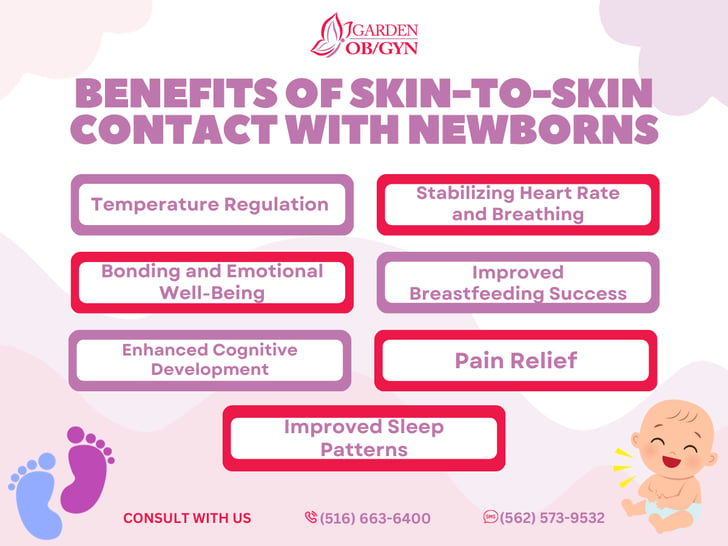Benefits of Skin to Skin Contact with Newborns
Skin-to-skin contact after birth fosters bonding, regulates baby's temperature, aids breastfeeding, and supports emotional well-being. Discover its profound benefits for both parent and newborn.

The birth of a child is a momentous occasion filled with joy, anticipation, and wonder. For both parents and newborns, it marks the beginning of a remarkable journey together. One of the most beautiful and beneficial practices during these early moments is skin-to-skin contact. This simple act of holding your baby close, with their bare skin against yours, offers a multitude of advantages for both the infant and the parent. In this article, we will explore the numerous benefits of skin-to-skin contact with newborns.
- Temperature Regulation
One of the primary benefits of skin-to-skin contact is its ability to help regulate a newborn's body temperature. Newborns often struggle to maintain their body heat, making them vulnerable to cold stress. When placed skin-to-skin on their parent's chest, they can borrow the warmth and stability needed to maintain an optimal body temperature. This intimate connection helps prevent hypothermia and provides a comfortable and cozy environment for the baby.
- Stabilizing Heart Rate and Breathing
Skin-to-skin contact has been shown to have a calming effect on newborns. It can help stabilize their heart rate and breathing patterns. The soothing presence of a parent's heartbeat and the rhythmic rise and fall of their chest can help regulate the baby's physiological responses, reducing stress and anxiety.
- Bonding and Emotional Well-Being
The emotional benefits of skin-to-skin contact are profound. It creates an immediate and intense bond between the parent and the baby. The physical closeness releases oxytocin, often referred to as the "love hormone," which strengthens the emotional connection between parent and child. Skin-to-skin contact can also reduce the risk of postpartum depression in mothers by promoting feelings of love and attachment.
- Improved Breastfeeding Success
Skin-to-skin contact promotes successful breastfeeding. When a baby is placed skin-to-skin with their mother shortly after birth, they are more likely to latch onto the breast and initiate breastfeeding. The close proximity and physical contact facilitate the baby's instinctual rooting and suckling reflexes, making breastfeeding a more comfortable and natural experience.
- Enhanced Cognitive Development
Skin-to-skin contact is not only beneficial for the baby's physical health but also for their cognitive development. The security and comfort provided during skin-to-skin moments promote a sense of safety and trust, which is essential for healthy brain development. Babies who experience regular skin-to-skin contact with their parents often exhibit improved cognitive and social skills later in life.
- Pain Relief
Studies have shown that skin-to-skin contact can reduce a newborn's perception of pain. The physical touch and warmth experienced during skin-to-skin cuddles release endorphins, the body's natural painkillers, helping to ease discomfort from procedures like vaccinations or blood tests.
- Improved Sleep Patterns
Many parents are eager to help their newborns establish healthy sleep patterns. Skin-to-skin contact can aid in this endeavor. The comfort and sense of security provided by being close to a parent can lead to more restful and longer sleep periods for the baby, benefiting both the child and their parents.
Skin-to-skin contact is a simple yet powerful practice that offers a myriad of benefits for both newborns and their parents. It creates a nurturing and loving environment that promotes physical and emotional well-being, enhances the parent-child bond, and sets the stage for healthy development in the years to come. Whether it's immediately after birth or during everyday moments of cuddling and bonding, skin-to-skin contact is a precious gift that parents can give to their newborns. It is a practice that not only benefits the child but also deepens the joy and connection of parenthood.
































